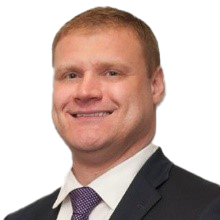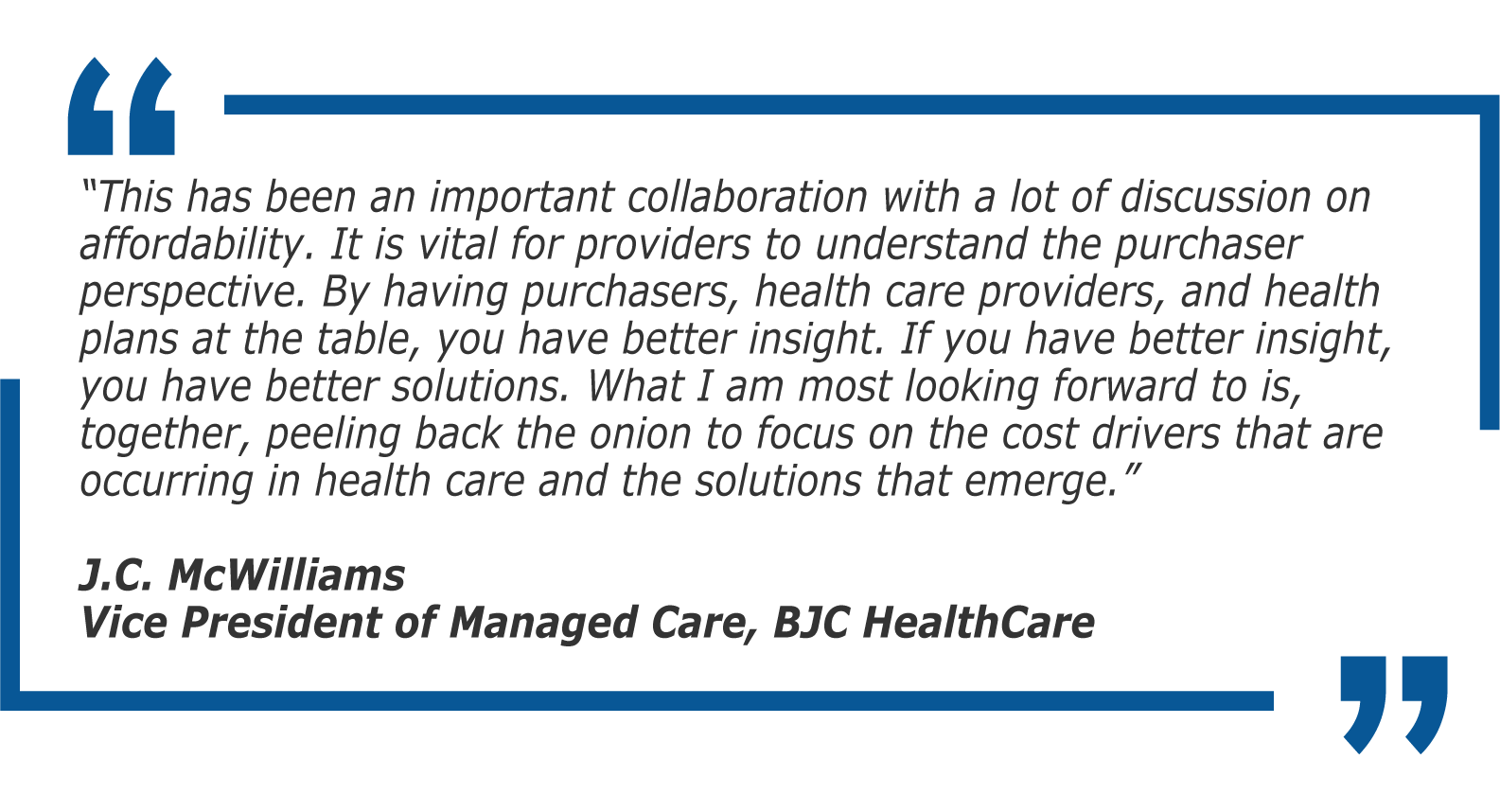|
|
Posted By Louise Probst,
Wednesday, November 8, 2023
|
Advances in medical imaging and laboratory technologies improve the ability to detect and diagnose disease, leading to earlier diagnosis, more precise treatments, and in some cases improved patient outcomes. When incorporated into medical care for symptomatic patients, these benefits have been widely recognized and covered by insurers and self-insured employers - it’s a different story when similar clinical advances are marketed as preventive screenings to non-symptomatic patients. Enter Multi-Cancer Early Detection (MCED) or full body scans, whose popularity is growing rapidly, particularly among the wealthy.
A recently published Wall Street Journal article discusses this rising health care trend and its implications. While these screenings are marketed to the consumer in a way that seemingly promotes preventive care, many medical experts are voicing concerns about their inefficiency and potential harm. These tests aren’t cheap and are generally not covered by insurance. With full body scans ranging from $650 to thousands of dollars, and the cost of Multi-Cancer Early Detection (MCED) tests around $1,000 - and the follow-up diagnostics necessary to confirm a diagnosis are covered by insurance and expensive. They also yield hefty profits for the hospitals that market these “preventive” screenings.
The Choosing Wisely Campaign in collaboration with the American College of Preventive Medicine released an article discussing six recommendations for appropriate preventive care, of which one urges avoiding the use of whole-body scans for tumor prevention as “there are no data suggesting that these imaging studies will either improve survival or the likelihood of finding a tumor.” These full-body screenings have a high rate of false positives, approximately 16% of cases result in such an outcome. With lesser frequency, in about 2% of cases, these scans have yielded false negatives.
While a single blood test able to detect up to 50 different cancers is appealing. Today there are only a handful of available cancer screening tests. Yet, Multi Cancer Early Detection (MCED) tests are not FDA-approved and do not result in a cancer diagnosis - other tests are needed to confirm the presence of cancer. False positives and false negatives can occur with MCED tests. A 2021 validation study, found the Galleri test had 99.5% specificity, meaning that it was very accurate for determining when a person didn’t have cancer-related signals in their sample. Yet, its overall sensitivity across all types of cancer was only 51.5% - meaning that it correctly identified a little more than half of people with cancer-related signals in their sample. The American Cancer Society states on their website that, “much more needs to be learned before these types of tests can be recommended for widespread use in people without any symptoms of cancer.”
Equity is an important consideration, not discussed. The expense and non-covered status of these screenings, make it likely that utilization will occur among those with the highest income -- and the expense of their follow-up diagnostic services will be socialized across all people in the insurance pool, further driving income disparities. Is this equitable? In the interest of value-based payments, hospitals marketing these screenings could forgo charging for the follow-up diagnostics services, unless cancer is found, in which case the plan would pay for the diagnostic services.
In an economic climate where people are looking to receive the highest value care, non-covered screening can seem appealing, but these scans aren’t consistently reliable or cost-effective. The best way to prevent chronic conditions and their progression is to establish a relationship with a primary care physician and attend routine checkups.
Warm regards,
Louise Y. Probst
BHC Executive Director
This post has not been tagged.
Permalink
| Comments (0)
|
|
|
Posted By Louise Probst,
Wednesday, October 11, 2023
|
Americans are among the least healthy people in the rich world, and among the most likely to die early according to a case made by Nicklas Kristoff in his recent New York Times Opinion piece. It’s true, life expectancy in the United States lags other industrialized nations and the gap seems to be widening. Kristoff offers a schematic comparing individual states with other nations. Missourians live shorter lives on average that residents in 38 states and its life expectancy ranks right above Iran and Morocco. Hawaiians enjoy the longest life expectancy in the U.S. yet, their lifespans still trail those of people in Japan, Australia, South Korea, Spain, Italy, Canada, France, and Taiwan.
The current U.S. average life span is just 76.4 years. Americans have been dying younger for some time, and while the COVID pandemic has factored into recent declines, it is not the only catalyst. Increases in drug overdoses, accidental injury, chronic disease, and suicide rates all contribute to the decline in the U.S. More alarming is that a person’s average “healthspan,” or healthy years not impacted by chronic disease, is only 66.1 years on average for the U.S. population. This ten-year gap between lifespan and healthspan is typically comprised of poor health, resulting in a lower quality of life. Increasingly experts agree that the problem is with the structure of our health system.
Michelle Williams, Dean of the Harvard Chan School of Public Health, finds it shocking that young people in America die at higher rates than their counterparts in other high-income countries, and that the U.S. also has the highest maternal and infant mortality rates among these countries. Her colleague, Dr. Asaf Briton, an internationally recognized health care leader and researcher, notes that while the U.S. has a very good sick care system - its health care system is inadequate in keeping people healthy.
Arianna Huffington agrees in her must read article, Behavior is a Miracle Drug for Our Health. She marvels at new technologies like gene therapy, immunotherapy and neural technology while pointing out the tragedy of modern health care in failing to recognize the miracle drug right in front of us: our behaviors.
BHC’s Board leaders came to a similar conclusion during their August BHC planning session. Employers have an opportunity to define and promote their vision of population health. Promoting healthy lifestyles to prevent disease isn’t just something that employers offer at the worksite. It is what they expect to be the foundation of conversations between patients and their providers and central to therapeutic treatment plans, overseen by health care providers. As the United States population continues to suffer at the hands of a broken medical system, taking charge of what we as employers and individuals can control may be the cure we desperately need.
If you agree it’s time to address this missing piece, please join us for the BHC annual business luncheon for members, October 25th at the Ritz Carlton. BHC board leaders will be there to share points from BHC’s new strategic plan and begin a discussion on ways to instill employers’ definition of population health into the U.S. health care delivery system. Register for lunch here.
Warm regards,
Louise Y. Probst
BHC Executive Director
This post has not been tagged.
Permalink
| Comments (0)
|
|
|
Posted By Louise Probst,
Wednesday, September 6, 2023
|
In the face of heavy opposition last year, the Inflation Reduction Act passed and among other things, paved the way for the federal government to negotiate drug prices directly with manufacturers. This congressional action makes it possible for Medicare to negotiate prices for high-cost drug with pharmaceutical companies for the first time— something other countries such as Germany, Japan, France, and the U.K. have already been able to do, with their drug prices resting at a fractional cost of those in the United States.
BHC signed on to support this provision, as did many other business health coalitions. While generally preferring private sector initiatives, there was no evidence that our nation’s very large PBM’s, whether operating in the Part D or the commercial space, had the negotiating clout needed to moderate drug price escalations. The spending gap between the U.S. and other industrial nations has been widening, rather than contracting, and medication expenses are creating a financial hardship for American employers and workers alike.
The noninterference clause created in the passage of Medicare Part D in 2003 has prohibited the U.S. government from being allowed to negotiate drug prices— until now. CMS aims to save $25 billion on drug costs per year by 2031— a savings that would significantly ease the drug cost burden for Americans.
Click here to see the drug list released last Tuesday. Of these ten drugs, six appeared in the top 25 ranked drugs across BHC’s 2021 Book of Business, with spend totaling just over $41 million for our Pharmacy Management Initiative. The stipulation for negotiated prices to be reduced by at least 25% would be comparable to a drug’s cost after rebates, therefore the hope is for a negotiated price with larger savings.
Drug manufacturers strongly oppose Medicare’s ability to negotiate drug prices and have taken legal action to stop or delay its implementation. Merck & Co, Johnson & Johnson, Bristol Myers Squibb, and Boehringer Ingelheim, as well as the U.S. Chamber of Commerce and the industry group PhRMA, have taken to suing Congress over what they argue is a violation of their constitutional rights. One lawsuit claims that drug price negotiation violates the fifth amendment, using the “takings clause” to indicate the unjust taking of private property without adequate compensation. Another lawsuit argues that forcing a company into price negotiation violates the first amendment right to free speech. Medicare seems confident that its ability to negotiate drug prices does not violate any constitutional rights, but the final determination will occur in the courts.
Without delays due to various lawsuits, drug price negotiation will take place over the next two years with newly negotiated prices for the first ten listed drugs set to take effect in 2026. In 2025, Medicare will introduce a list of 15 drugs for round two negotiation and in 2026 another list of 15 drugs for round three negotiation. The legislation specifies that the list in 2026 may go beyond retail medications and include those medications administered in a medical setting. A drug price negotiation timeline can be found here.
While the long-term effects of this legislation are yet to be known, employers will want to follow Medicare’s progress and engage with their health plan and PBM partners to ensure appropriate and prompt fiduciary action is taken to protect the interest of your company and employees.
Warm regards,
Louise Y. Probst,
BHC Executive Director
This post has not been tagged.
Permalink
| Comments (0)
|
|
|
Posted By Louise Probst,
Wednesday, August 2, 2023
|
If you have been waiting for a break in the heat or rain to get outside, check out the forecast for next week. Tuesday, August 8th is predicted to be sunny, dry, and mild. A perfect day to reconnect with old friends, meet some new ones, learn new knowledge, and explore opportunities to build and support others in building self-advocacy skills at our BHC Member Luncheon.
The luncheon will cover timely health care topics, presented by leaders from the National Kidney Foundation and a guest appearance from Missouri’s first Chief Medical Officer,
Dr. Heidi Miller. As a St. Louis practicing primary care physician, Heidi dedicated her career to improving population health for those facing challenging social disparities. Having accepted the role of Missouri’s first Chief Medical Officer (CMO) only eight months ago, Heidi has a call to action for St. Louis employers. Eager to connect with employers, Heidi will make a guest appearance to share how the Missouri Department of Health and Senior Services is addressing a critical population health concern among its own employees.
Advocacy is a critical life skill, particularly for anyone with a chronic illness. When we don’t feel well because of a chronic condition or other health concerns, we can feel helpless in finding solutions and uncertain about the overall state
of our well-being. Having a relationship with a trusted Primary Care Provider is crucial in preventing progression of serious medical conditions, creating space to be heard as a patient, and keeping your personal health within your control.
Yet, research demonstrates that when medical guidelines and treatment opportunities advance it can take years, 17 to be exact
, for most physicians to become aware of the changes and adapt their medical practice accordingly. Unfortunately, too many people do not receive a medical diagnosis and appropriate treatment until their condition has progressed beyond repair.
This is currently the case with chronic kidney disease. CKD is a growing health concern that currently affects 1 in 7 Americans
or an estimated 37 million Americans. It has been deemed a “silent killer” due to the lack of symptoms
that manifest in the body until the disease has reached its late stages. Screening protocols, lifestyle interventions, and treatment options have advanced in recent years, but medical practice has not. “Crashing into dialysis” is an
expensive and all-too-common occurrence. This event means that patients learn of their kidney failure shortly before facing a dire decision: dialysis or die—
yet their kidney function has been diminishing for years, without any action to prevent or slow the damage.
Elizabeth Montgomery, National Vice President, Learning Strategies and Population Health Programs at the National Kidney Foundation, will present on the importance of advocacy in healthcare using kidney disease as an example of necessity for system-wide improvement. To expand your knowledge on this topic and hear what your peers and colleagues are doing to help their employees understand their health care needs and ensure their diagnosis and treatments are timely, please join us for lunch.
Warm regards,
Louise Y. Probst
BHC Executive Director
This post has not been tagged.
Permalink
| Comments (0)
|
|
|
Posted By Louise Probst,
Tuesday, July 11, 2023
|
According to a 2023 report by the Medicare Trustees, the Medicare Hospital Insurance (HI) trust fund is projected to exhaust its reserves in eight years--when today’s 57-year-olds first qualify for benefits. Translated, this means that in 2031 the fund’s income will be sufficient to pay just 89% of scheduled benefits and reach the point, at which the law requires an 11% spending cut to match revenues. However, this is actually an improvement in the timeline, moving the projected insolvency three years later than was projected in 2022.
The HI trust fund pays Medicare’s Part A benefits, which cover inpatient hospital stays, skilled nursing facility (SNF) stays, some home health visits, and hospice care. It is financed primarily by payroll taxes paid by employers and employees and is highly sensitive to economic conditions that impact payroll taxes, such as the number of workers and average wages. While the government could increase payroll taxes to support the HI fund, it is estimated that the Medicare payroll tax would need to be increased by 21 percent to render the HI trust fund solvent. This makes it clear that boosting revenue alone will never solve the problem.
The other Medicare trust fund is the Supplemental Medical Insurance (SMI) trust fund. It covers Part B and some of Part D and is financed through a combination of premiums and general revenue amounts that change each year to account for projected spending. As a result, the SMI trust fund does not have the same funding pressure as the HI trust fund despite representing more of Medicare’s spending. Spending funded by both trust funds were up in 2022 compared to the prior two years. 
The Committee for a Responsible Federal Budget (CFRB) identifies additional factors that contributed to Medicare’s improved solvency projections. The expected sharp uptick in services driven by pent-up demand during the pandemic did not occur. Also, the passage of the Inflation Reduction Act brought new prescription drug savings to future spending projections. As a leader in reforming the health care payment system to improve efficiency, Medicare has outperformed private health insurance in holding down the growth of health costs. Knowing that any policy fix takes years to implement and refine, CMS is expected to continue to focus attention on solutions that will slow the progression of chronic disease and make Medicare spending more efficient.
CFRB’s Health Saver’s Initiative offers a series of proposals for cutting Medicare costs including: - §negotiating lower payments for drugs and medical services
- reducing Medicare Advantage overpayments so as not to stifle these federally funded private health plans’ incentives for improving care quality and efficiency
- engaging primary care first to reduce overuse
- equalizing payments regardless of the site of service – also known as “site neutral payments”
Understanding their parallel role in driving higher value healthcare and reducing more expensive hospital care, private sector purchasers employ strategies to encourage preventive care and effective primary care relationships for employees. Health savings accounts or other forms of consumer-driven healthcare encourage employees to take a more active role in managing their healthcare costs. With comparative information on cost and quality differences in health care more readily available than ever, employers can support enrollees in understanding how to access useful and trusted information when it is needed for themselves and their loved ones. Employers can also encourage their health plan partner to track CMS’ successful initiatives and adopt them in their commercial contracting strategies, such as site neutral payments for services or limits on specialty drug reimbursement. Healthcare costs already significantly burden employers and workers, we all need to stay focused on realizing lower cost and higher value care.
Warm regards,
Louise Y. Probst,
BHC Executive Director
This post has not been tagged.
Permalink
| Comments (0)
|
|
|
Posted By Louise Probst,
Wednesday, June 7, 2023
Updated: Tuesday, June 13, 2023
|
The high cost of pharmaceuticals and the practices of Pharmacy Benefit Managers (PBMs) continue to attract attention. Congress, federal agencies, and elected officials in state legislatures are exploring actions to reduce drug costs for patients and overall pharmacy spending in the United States. PBMS say their buying power is used to combat high prices set by drug manufacturers and that the rebates and discounts they receive are returned to plan sponsors and ultimately translate into lower premiums. Their critics claim that in addition to being too large, their practices are anticompetitive. The top three PBMs now control 80 percent of the U.S. pharmacy benefit market.
The Federal Trade Commission’s Chair, Lina Khan, announced in June 2022 that the FTC would investigate the practices of the six largest PBMs, under a Section of the FTC Act, which authorizes it to conduct studies without a specific law enforcement purpose. Their investigation will evaluate the impact of PBM practices on competing pharmacies, payers, doctors, and patients. PBMs have been accused of harming patients by extracting rebates, ultimately raising the price that consumers pay for medicines. The more recent vertical integration with the nation’s largest health plans and their wholly owned mail order and specialty pharmacies has attracted the FTC’s attention. Last month the FTC issued additional orders to rebate aggregators, Zinc Health Services, owned by CVS; Ascent Health Services, LLC, owned by Express Scripts; Prime Therapeutics; and other PBMs to provide information.
Ms. Khan made an interesting observation, highlighting that policy choices have shaped the state of the current PBM industry, allowing for mergers leading to market concentration and vertical integration with insurance companies. Similarly, policy choices have facilitated the acquisition of physician practices by insurance, hospital, and private equity firms. Moreover, it was policy choices that have resulted in Americans paying substantial amounts for prescription drugs whose research were initially funded by taxpayers. It is critical to recognize that these questions of commerce are democratic choices with far-reaching implications. While the FTC plays a significant role, other public entities also have the power to effect change. Advocacy and public engagement are essential to ensure public voices are heard and to uphold accountability.
Congress is weighing in. A May 10th hearing of the U.S. Senate Subcommittee on Health, Education, Labor and Pensions, chaired by Senator Bernie Sanders, brought together the CEOs of four major insulin manufacturers and the three largest PBMs. I appreciated how well-informed our Senate leaders were, the ease with which they called out the wide differences between insulin and other drug prices in the U.S. and the rest of the industrialized world, and doggedly attempted to clarify the flow of money through the PBMs. The high cost of prescription drugs for patients, particularly, the cost before having met their health plan deductible, was a primary concern of Senate leaders who have authored legislation for consideration.
In the 2020 U.S. Supreme Court (SCOTUS) decision, Rutledge v Pharmaceutical Care Management Association, the court upheld an Arkansas law that required PBMs to pay pharmacies no less than their acquisition costs for prescription drugs. The SCOTUS opinion was that the Arkansas law was not preempted by Employee Retirement Income Security Act (ERISA), a federal law that sets standards for retirement and health benefits, because it regulates PBM payments to retail pharmacies and not employer benefit plan design.
State legislatures, noting the SCOTUS decision, have not waited to see what actions their federal colleagues might take. A quick look at the National Academy for State Health Policy’s legislative tracker counts 137 PBM regulation bills having been introduced in 43 states. While some states such as Oklahoma and Florida have passed bills that have been into law, it’s a little too soon to fully understand the outcome of the 2023 state assemblies on employer pharmacy benefit offerings.
The National Community Pharmacy Association, representing independent pharmacies assert that PBMs leverage their size to extract unfair contract terms and have too much influence on their business practices. They have organized an effective campaign to bring their advocacy agenda to the attention of policy makers and the public. Number one on their list is to repeal all exemptions for ERISA plans to make all PBM regulations applicable to all commercial and Medicaid managed care plans.
ERISA is of critical importance to multi-state employers. Adherence to varying laws in every state where they have employees is an expensive and administrative nightmare. It also greatly impairs their ability to craft plan designs that best meet the needs of their workforce and enable them to manage costs.
Join the BHC to Expand Your Knowledge
To learn more about this evolving issue, please join the BHC at our June 22nd member meeting as we examine the health policy landscape and its influence on pharmacy benefit plans for multi-state employers. Click here to register for the meeting.

| 
| James Klein
President
American Benefits Council
| Jonalan Smith
Senior Vice President
Lockton Companies |
Warm regards,
Louise Y. Probst,
BHC Executive Director
This post has not been tagged.
Permalink
| Comments (0)
|
|
|
Posted By Louise Probst,
Wednesday, May 3, 2023
Updated: Tuesday, May 2, 2023
|
Last weekend, the U.S. Surgeon General, Dr. Vivek H. Murthy, authored an urgent call to action for the health and well-being of Americans. His plea: We must take vital steps to fight the loneliness epidemic. In his New York Times guest opinion
, Dr. Murthy discusses the dangers of loneliness, while laying out a national framework to combat this daunting issue. According to Dr. Murthy, “The increased risk of premature death associated with social disconnection is comparable to smoking daily—
and may be even greater than the risk associated with obesity.” Loneliness has a negative impact on both a person’s mental and physical health. From an increased risk of anxiety and depression to higher rates of heart disease, stroke, and dementia,
the effects of social disconnect on the population are visible. Additionally, certain demographics are more likely to be affected by social isolation than others, such as adults over the age of 45, minority groups, immigrants, and members of the LGBT
community, according to the CDC
. To confront this crisis, Dr. Murthy outlines a multistep process to counter loneliness:
- Strengthen Social Infrastructure
- Decrease Screentime and be More Present
- Take Measures to Connect with Others in Society
Loneliness and the Workplace
The loneliness epidemic is not new, but the COVID-19 pandemic heightened social isolation and anxiety for many. While some workers thrive while working remotely, citing more time for exercising and bonding with family, others report being less active and feeling isolated and depressed
. For those that do not make specific time for exercise, commuting to work, taking the stairs at the office, and walking to lunch and meetings boosts their steps and overall activity for the day. Referred to as Non-Exercise Activity Thermogenesis,
or NEAT, this portion of daily energy expenditures resulting from spontaneous physical
activity that is not specially the result of voluntary exercise, can help prevent disease and promote well-being. Levels of NEAT add up over days and weeks and can vary to 2000 kilocalories per day, contributing meaningfully to the health and wellbeing
of workers. A pillar of Lifestyle Medicine, movement reduces our risk of chronic diseases, anxiety, and depression, and improves longevity.
Connections Large and Small
While fostering meaningful connections with family and close friends is one tool for combating loneliness, research suggests that smaller connections, or “weak ties” are just as vital. Weak ties, such as the friendly chats you have with strangers in public or general acquaintances, like exchanging pleasantries at the office, have a steep impact on your well-being. According to a study conducted by Gillian Sandstrom
of the University of British Columbia, weak tie relationships help decrease depressed moods, increase overall happiness, and create a greater sense of belonging among individuals. They also tend to keep us sharp, as these exposures have been found
to bring introductions to new ideas and people that are important to our sense of self, growth, and work.
Opportunities to Strengthen Connections and Increase Movement
The workplace, whether in person or virtual,
offers opportunities to support workers via movement and social connections. Be mindful of actions to increase non-voluntary exercise while at work, whether you are in person or remote. Walking meetings or fitness challenges can make a difference
for employees mental and physical health, which in turn reduces health care spending. Recognize the value in small talk and take a few minutes to engage with coworkers and express interest in their well-being. A study conducted by Psychological Science that explores the way that empathy impacts well-being and aids in fostering relationships found that people who experienced empathy for the positive emotions of others were subject to higher levels of well-being. “Fruedenfreude,”
or the ability to find pleasure in another person’s success—can function as a sort of second hand positivity. This is applicable within weak-tie connections just as it is in close relationships. The way we view connection and actively interact with
others directly impacts their and our state of health.
BHC meetings offer a great opportunity to connect with old friends and make new ones, we look forward to seeing you soon.
Warm regards,
Louise Y. Probst
BHC Executive Director
This post has not been tagged.
Permalink
| Comments (0)
|
|
|
Posted By Louise Probst,
Wednesday, April 5, 2023
Updated: Wednesday, April 5, 2023
|
Lung cancer is the leading cause of cancer death in both men and women in the United States, and accounts for over one-fifth of all cancer deaths. According to the CDC, Missouri had the seventh-highest rate of new lung and bronchus cancer diagnoses among states in 2019, and the ninth-highest rate of deaths from lung and bronchus cancer. Although Missouri’s smoking rate has declined over the past decade, at 18% it remains significantly higher than the national rate of 14%.
Lung cancer screening in Missouri’s commercially insured population was the focus of a recent Midwest Health Initiative report, Lung Cancer Screening: The Missouri Story. While lung cancer screening rates in Missouri doubled between 2018 and 2021 - they remain low at about 6.6% of eligible adults.
Like other cancers, lung cancer survival is greatly improved when the cancer is detected early, as treatment options are less likely to be curative once the cancer has spread. In an effort to reach a broader and more inclusive population of at-risk patients sooner, the U.S. Preventive Services Task Force (USPSTF) changed lung cancer screening guidelines in 2021: low-dose CT screening is now recommended annually for current smokers, or those that quit within the past 15 years, aged 50 to 80, with a history of 20 or more pack-years.
Although early detection of lung cancer is critical, the decision to partake in screening is more complex than it may initially seem. There are potential risks, such as false test results, low doses of radiation exposure, and overdiagnosis. Patients should be counseled on these prior to being screened. Additionally, lung cancer screening is not appropriate for patients who are unwilling or unable, due to other health conditions, to undergo treatment if lung cancer is found. Early detection won’t change the outcome for patients who will not be treated, but screening and diagnosis may cause emotional or physical harm.
Missouri and other states’ lung cancer statistics can be compared on this American Lung Association interactive website. - Overall, patients in Missouri are diagnosed early at a similar rate to patients nationally, except for Latino Americans, who were least likely to be diagnosed early in Missouri.
- People diagnosed with lung cancer in Missouri are less likely to undergo surgery or other treatment.
- Missouri’s five-year survival rate for lung cancer is meaningfully below the national average.
While surgery remains the ideal first-line treatment for patients with early-stage lung cancer, patients who are not healthy enough to undergo the procedure or whose cancer has spread may not be candidates. Other treatments may be recommended, such as chemotherapy, radiation, targeted therapy, or immunotherapy. Recent improvements in survivability are likely due in part to advancements in immunotherapy and targeted treatments informed by biomarker testing.
A new and rapidly evolving field, biomarker testing, enables medical professionals to study tumor cells and characterize their genetic mutations, protein expression, and tissue environment in order to identify treatments that can target the specific molecular pathways of cancer cells. Clinical stage, biomarkers, tumor histology, and several other factors all contribute to the treatment decision. In lung cancer, testing is primarily utilized for late-stage non-small cell lung cancer.
An MHI report coming soon will provide additional insights into targeted therapy and coverage for lung cancer biomarker testing. MHI analysts reviewed clinical guidelines across Missouri’s major health plans and summary plan documents (SPDs) from a handful of self-insured employers and found no barriers to these evolving and game-changing biomarker tests. All Missouri major health plans’ biomarker policies were consistent with national standards. While employer SPDs were generally silent on “biomarker” testing, they explicitly covered medically necessary diagnostic services and genetic testing. Employers may benefit by referencing the National Comprehensive Cancer Network® (NCCN®) in their plan documents. This collaboration of 33 leading cancer treatment centers across the U.S., including Siteman Cancer Center in St. Louis, has established “a comprehensive set of guidelines detailing the sequential management decisions and interventions that currently apply to 97 percent of cancers affecting patients in the United States.” Employers could simply state that their plan provides coverage for biomarker testing consistent with NCCN guidelines, much like the way they state their plan covers preventative screenings recommended by the USPSTF, and rest assured that their coverage will remain consistent with best practices and evolving science overtime.
What else can employers do? - Connect employees with Missouri Department of Health and Senior Services’ free Missouri Tobacco Quit Services. This confidential service is an effective way to help Missourians quit all forms of tobacco, including e-cigarettes and smokeless tobacco. Prevention is always the best policy.
- Educate eligible tobacco users and their family members on the importance of annual screenings and early detection, noting the importance among Latino populations and emphasizing the fact that lung cancer screenings have first dollar coverage.
- Educate employees on available support programs, such as those offered through your EAP, which can help with issues like depression and anxiety, coping with emotions, and even managing money issues.
- Support employees and their dependents in achieving their best health, and encourage protective factors to boost resilience, such as a nutrient-dense diet, improved physical activity, and healthy sleep habits.
- Join BHC members for the April 12th community forum, “Building Immunity: The Science of Healthy Living” for an update on this science. Register here.
Warm regards,
Louist Y. Probst BHC Executive Director
This post has not been tagged.
Permalink
| Comments (0)
|
|
|
Posted By Todd Boedeker,
Wednesday, March 8, 2023
Updated: Tuesday, March 7, 2023
|
Employers have witnessed the evolution of workplace health over the decades – from the safety-focused policies of the 70s, to the exercise trends and fad diets of the 80s and 90s, and more recently, a shift from physical wellness to holistic well-being. As we emerge from the pandemic, a new term is being embraced: immune fitness. If COVID-19 has taught us one thing, it is that building our immunity (as individuals, organizations, and communities) could be the most important thing that we do to preserve our health and our future.
Over time, our understanding of the immune system has advanced thanks to early studies of smallpox, the discovery of antibodies, and the creation of the first vaccines. Recent research, however, has focused less on external threats and more on the impact of genetics, lifestyles, and behaviors on immune function and autoimmune disease. We’ve long known that diet, activity, sleep, and stress play a role…but to what extent?
To examine these questions and the science behind healthy living, the BHC is hosting our next in-person conference on Wednesday, April 12.
Confirmed
speakers include:

|
Susan Benigas
Executive Director
American College of Lifestyle Medicine
|
| |
|

|
Mark Cunningham-Hill, MD
Medical Director
Northeast Business Group on Health
|
| |
|

|
Matthew Herzberg
Managing Partner
Principled Transformation
|
| |
|

|
Devyani Hunt, MD
Medical Director
Washington University Living Well Center
|
Conference attendees will learn about the latest immune system research; the promise of evidence-based, lifestyle medicine in treating (or even reversing) chronic conditions; and how employers are redefining well-being to build employee and organizational immunity in a post-pandemic world. We are excited to return to our long-standing venue at the Donald Danforth Plant Science Center for a morning of education and networking with nearly 300 business and health care leaders.
BHC members receive complimentary registration for this event. To access, please click here
and sign in to your website profile, or use the promo code BHCCF2023 at checkout. Travel stipends are also available to assist out-of-town employer members in joining us in St. Louis for the event. For questions regarding registration, please
contact Todd Boedeker at tboedeker@stlbhc.org.
We look forward to seeing you there!
This post has not been tagged.
Permalink
|
|
|
Posted By Louise Probst,
Thursday, February 9, 2023
Updated: Wednesday, February 8, 2023
|
A national panel of experts took center stage this week to unveil new policy recommendations for putting health care spending in the United States on a sustainable path. The Health Affairs Council on Health Care Spending & Value (the Council) is a nonpartisan, multidisciplinary workgroup tasked with “defining a deliberate approach for moderating health care spending growth while maximizing value” for state and federal policy leaders’ consideration. The recently published road map provides recommendations to public and private stakeholders on how to achieve higher health care value, compatible within various political environments. The Process Throughout the multiyear process, 22 council members reviewed the literature, consulted health care and economic experts, and evaluated the practicality and impact of a wide variety of proposed interventions. The Road Map for Action clarifies that the Council’s analysis considered several drivers of health care cost: administrative waste, excess prices, clinical waste, regulatory burden, supply chain profits, clinician earnings, and fraud and abuse. The publication also notes that the growth in U.S. health care spending relative to Gross Domestic Product (increasing from 6.9% in 1970 to 17.7% in 2019) seriously crowds out the ability of government and families to afford other necessary services. Council leaders urged that the extent of the U.S. health care spending problem must not lead to inaction. To show the magnitude of opportunity and the risk of doing nothing, research by Dartmouth health economist Jonathan Skinner and colleagues was referenced. It estimated that if health care’s share of GDP could be stabilized to the 2019 level of growth and remain there until 2031 (rather than following its rising trajectory since 1980) then health care spending would be $3 trillion dollars less. The Recommendations In addition to stating the Council’s objectives, the road map also makes clear what is not a focus of its work: social determinants of health, low-value care, and pharmaceutical pricing and spending. The rationale for intentionally excluding these areas is not a lack of concern for these issues, rather a clarity of focus and knowledge of efforts underway elsewhere. There is also a detailed discussion of the roles of federal and state government, with a seeming preference for state action with federal alignment and support. The road map includes a ranking of policy recommendations, which fall into four areas: - Administrative streamlining
- Price regulations and supports for competition
- Spending growth targets
- Value-based payments
Why It Matters
In reading this work, I celebrated the alignment between the national experts’ deliberations and the conversations that have evolved during a similar local, multi-stakeholder effort over the last two years. Published last month, the Midwest Health Initiative’s new report Realizing Effective and Affordable Change in Health Care details the process of achieving shared commitments to health care spending growth targets in St. Louis for the 2023, 2024, and 2025 years. Resulting from a partnership of nearly 30 public and private employers, labor unions, health plans, health systems, and medical groups, the REACH workgroup will guide regional efforts to mitigate rising health care costs, while also monitoring advancements in primary care.
National-Local Alignment
Both the Council’s and REACH’s efforts are intentional and centrally focused on bending the health care cost curve. Although the road map calls for statewide, mandated strategies, REACH is unique in its voluntary, regional approach. Yet, there are other important parallels to point out:
- The national road map suggests “collective action” has been a missing ingredient from U.S. actions to stem spending and calls for multi-stakeholder governance. At the outset, the REACH workgroup acknowledged the importance of an “all-in” approach, seeking commitments from every major St. Louis medical group and health system to align actions in flattening spending growth.
- The road map emphasizes that data for target setting must be readily available so that spending growth can be calibrated below key economic indicators, such as gross state product, household income, wages, or Consumer Price Index. REACH participants evaluated the same list of economic indicators and selected state domestic product as the preferred metric to provide a context for understanding regional health care spending growth.
- The road map notes that centralized data collection is essential and also recommends that states analyze (transparently) areas of high spending, spending variation, and spending growth rates to determine potential drivers, such as outlier prices, practice patterns, population characteristics, or other factors. REACH partners have agreed upon measures and methodologies to assess cost and quality performance among St. Louis medical groups, which will be published in future public reports.
As a next step for REACH, a series of meetings to support stakeholders in realizing these shared goals will begin next month. Participation is open to interested BHC employer members. Please contact me or Allison Ball to get involved in this important work. Warm Regards,
Louise Y. Probst BHC Executive Director 
This post has not been tagged.
Permalink
|
|